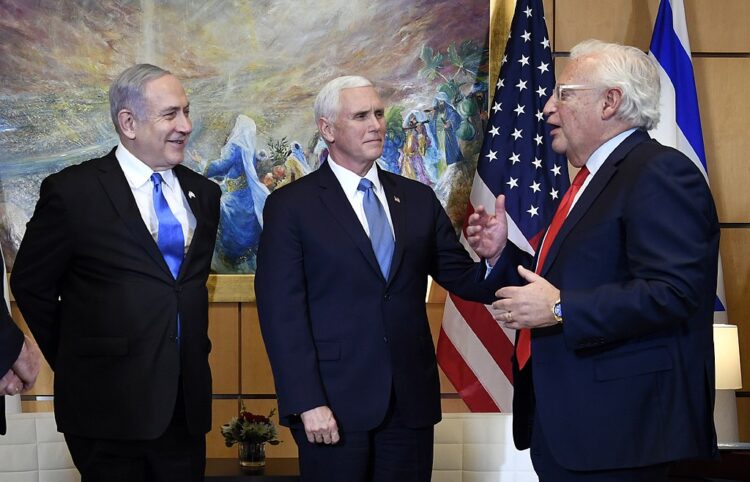Benjamin Netanyahu, Israel’s former prime minister, regarded Donald Trump’s Middle East peace plan as little more than an opportunity to annex a chunk of the West Bank, says Barak Ravid, an Israeli journalist whose book, Trump’s Peace, was published in Hebrew last month.
The Trump administration released its proposal, Peace to Prosperity, on January 28, 2020 following a two-year delay.
During the press conference at the White House in which it was unveiled, Netanyahu announced he would immediately annex the Jordan Valley and Jewish settlements in the West Bank, which Israel has occupied since the Six Day War.
The U.S. ambassador to Israel, David Friedman, supported Netanyahu’s announcement, prematurely claiming that the Israeli government could annex the Jordan Valley immediately, and that the United States would recognize the annexation.

Speaking at an Americans for Peace Now webinar on January 27, Ravid said that Netanyahu backed Trump’s plan, the so-called “deal of the century,” because he viewed it as a “land grab,” a chance to annex some of the West Bank.
Shortly after the press conference, Trump’s senior advisor and son-in-law, Jared Kushner, issued a startling clarification, saying the administration had not given Israel a green light to annex the Jordan Valley, which comprises approximately one-third of the West Bank.

Later, Trump said that Netanyahu’s announcement annoyed him. “I got angry and I stopped it because that was really going too far,” he said.
In the summer of 2020, said Ravid, Friedman told Netanyahu that annexation was off the table unless he granted the Palestinians meaningful concessions. Netanyahu refused.
The confusion over the meaning of the plan arose due to conflicting views within the Trump administration, said Ravid, who currently writes for the Walla and Axios news sites.
Trump and Kushner thought the Jordan Valley should be part of a future Palestinian state, with Israel in charge of security. Friedman, a keen supporter of Israel’s settlement project in the West Bank, believed Israel should retain the Jordan Valley, as well as the Golan Heights.

Netanyahu had previously opposed annexation, fearing it would lead to an undesirable one-state solution. But after the 2015 Israeli election, Netanyahu’s view hardened into support for annexation, said Ravid. He added that Netanyahu was influenced by the settler movement and by his hawkish son, Yair.

Netanyahu abandoned annexation when the United Arab Emirates insisted on it before normalizing its relations with Israel under the 2020 Abraham accords.
Apart from its fear of Iran, the United Arab Emirates established formal ties with Israel to enhance its knowledge-based economy, said Ravid. The United Arab Emirates telegraphed its interest in a rapprochement with Israel when its ambassador in Washington attended Trump’s press conference with Netanyahu, he added.
Trump’s advisors warned him that his recognition of Jerusalem as Israel’s capital in 2017 would infuriate the Palestinian Authority. Trump was determined to go through with it because he wanted to fulfill one of his presidential campaign promises.
The Trump administration assumed the Palestinians would come to terms with his decision. In fact, the Palestinian Authority boycotted Trump’s peace plan, prompting him to cut U.S. aid to the Palestinians. If the Palestinians had cooperated with Trump, they would have reaped substantial benefits, Ravid claimed.
Trump believed the president of the Palestinian Authority, Mahmoud Abbas, was more forthcoming and flexible than Netanyahu in terms of accepting a two-state solution. But in the end, Trump’s peace plan was rejected by the Palestinians, leaving the status quo in place.
